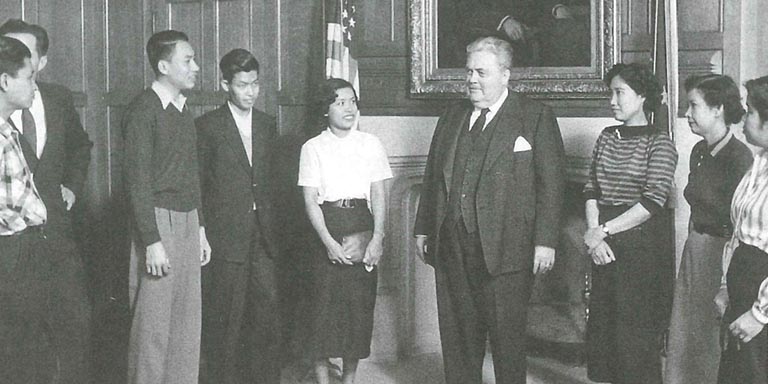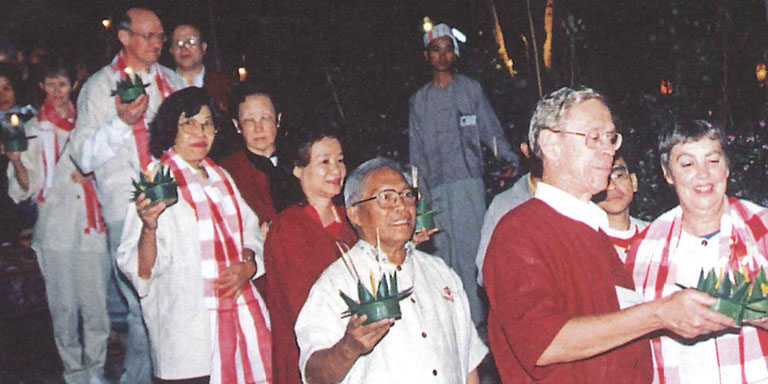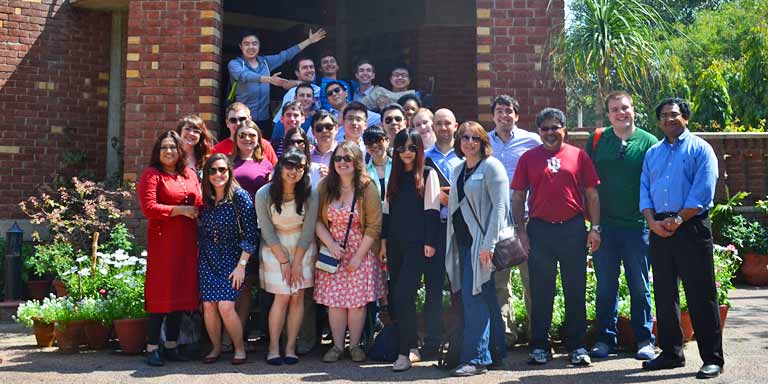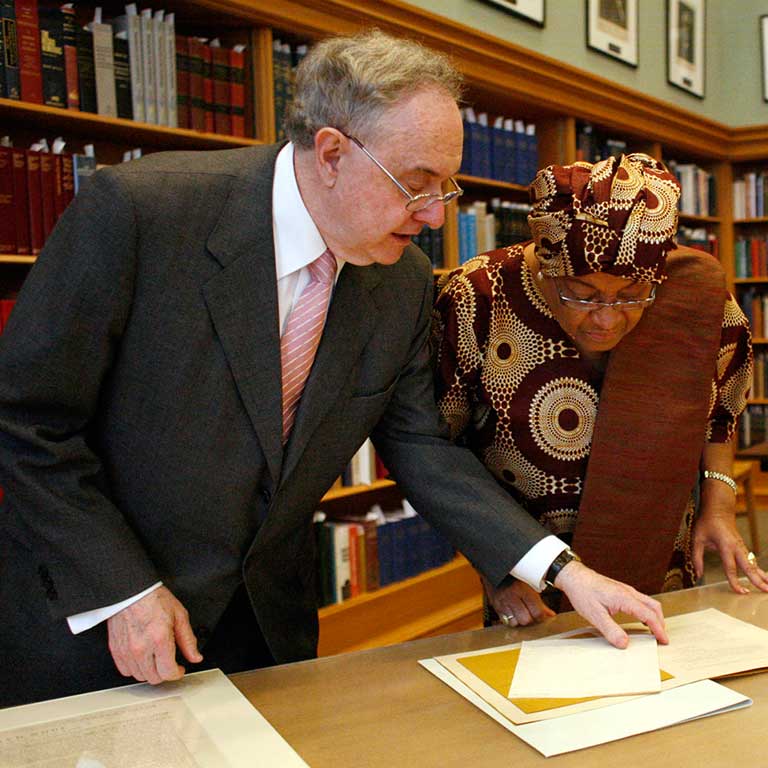The early years
Indiana University has had international connections almost from its inception. In 1836, two years before IU had formally attained university status, William Richard Harding left Ireland and became IU’s first foreign-born faculty member, as principal of the Preparatory Department. Beginning in 1836, IU students could study a modern language (French). International law was an explicit part of the original law curriculum in 1842. That same year, Henry Tanner, raised in London, England, became IU’s first foreign-born graduate.
IU faculty members began study abroad tours to Europe in 1879. Elmer Bryan, IU professor of education, took a leave of absence in 1901 and became general superintendent of education in Manila. His connections opened IU’s first informal international exchange. By 1916, 17 IU graduates resided in the Philippines. In 1916 as well, an IU branch of the Cosmopolitan Club was established and for 50 years was a major force in fostering social interactions between domestic and international students on the Bloomington campus.
For a rural Midwestern university, these early interactions provided a window to the outer world, but the permanent institutional commitment to international education awaited the leadership of Herman B Wells. Early in his presidency, he joined a tour of senior university administrators to Latin America. Afterward, he declared, “All at once I became conscious of the world scene.” His support for IU’s international engagement was unfailing. He championed a program to teach Central Asian languages to army officers during World War II and supported its expansion into a Summer Language Institute, which continues to this day, teaching languages that go untaught at most universities. In 1949, Wells seized an opportunity for IU faculty members to assist Thailand in developing university-level training. He established a center for international students on the Bloomington campus in 1951.
Wells, pushing back against the isolationist sentiments of the United States during the 1950s, expanded IU’s international commitments with projects in Thailand, Brazil, and Pakistan. Academic offerings increased, especially in Russian and Chinese studies.
In 1959, Walter Laves, chair of political science and a prime mover in IU’s development efforts in Thailand, reported “a whole new dimension” for American universities with “the vast increase of foreign students from non-European countries.” Laves, concerned that students came with different language and cultural issues, proposed that the university secure a grant that would allow IU to provide a full semester of preparatory study at no cost to the student. He asserted the institutional value of this special accommodation, which “should make a major contribution to the development of effective relations between the United States and the newly developing countries of the world” and so “might lead to a larger new role for Indiana University in the education programs of students from all the newly developing countries.”
Philip Daghlian, chair of IU’s Foreign Student Committee, took up that mission. He proposed an IU Counseling Institute for Foreign Students that would provide special programs to address admissions standards and English and cultural preparation. The Advisory Committee on Foreign Students defended IU’s handling of what was then called the “foreign student problem” and asserted what became long-standing policy: international students must meet standard admissions requirements under the oversight of the Office of Admissions, be tested in English when they arrive and be put into remedial English if required, and that the Office of the Counselor for Foreign Students had a good orientation program that should be “continued and expanded.”
With the help of Professor Robert Shaffer, a colleague in the School of Business, and a grant from the U.S. Department of Health, Education, and Welfare, Associate Dean of Students Leo R. Dowling conducted a three-year research project aimed at measuring the impact of foreign students on their domestic counterparts. At a time when there were “pressures to limit nonresident enrollment in public institutions, to restrict housing and financial aid to resident students,” Dowling and Shaffer surveyed more than 500 students. The results of their survey “Foreign Students and Their American Student Friends,” published in 1966, included 22 general conclusions. Among these were (1) friendship with foreign students encourages American students to take a broader interest in national and international affairs, and (2) friendship with foreign students encourages American students to alter their future plans.








